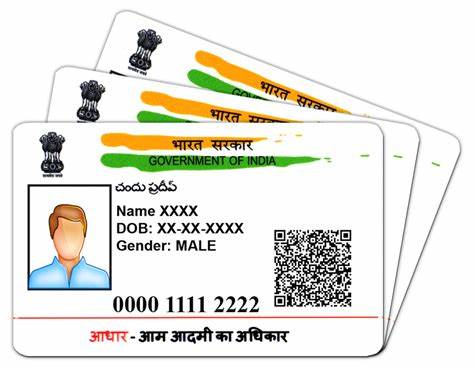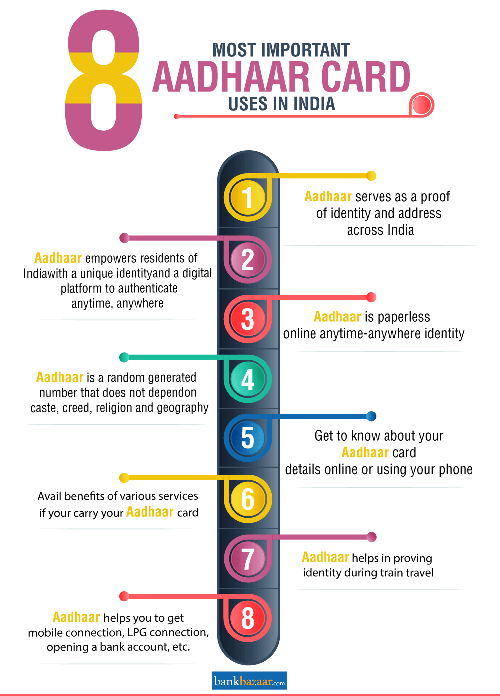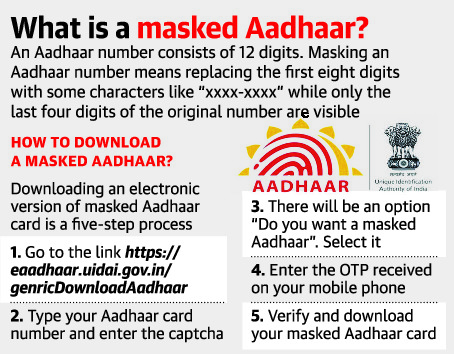Free Courses Sale ends Soon, Get It Now


Free Courses Sale ends Soon, Get It Now



Disclaimer: Copyright infringement not intended.
Context
About Aadhaar
Essential Facts about the Aadhaar Card
|
Demographic information |
Name, Date of Birth (verified) or Age (declared), Gender, Address, Mobile Number (optional) and Email ID (optional), in case of Introducer-based enrolment- Introducer name and Introducer’s Aadhaar number, in case of Head of Family based enrolmen- Name of Head of Family, Relationship and Head of Family’s Aadhaar number; in case of enrolment of child- Enrolment ID or Aadhaar number of any one parent, Proof of Relationship (PoR) document |
|
Biometric information |
Ten Fingerprints, Two Iris Scans, and Facial Photograph |
Aadhaar number is devoid of any intelligence and does not profile people based on caste, religion, income, health and geography. The Aadhaar number is a proof of identity, however, it does not confer any right of citizenship or domicile in respect of an Aadhaar number holder.
Eligibility Criteria for Aadhaar Card

Significance
What is Masked Aadhaar?

In a nutshell,
Centre retracts caution on Aadhaar photocopies - The Hindu
© 2024 iasgyan. All right reserved